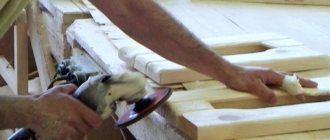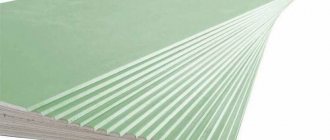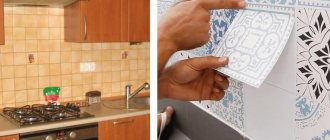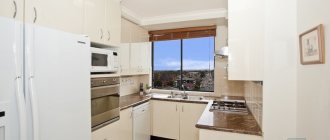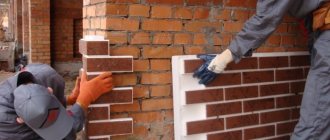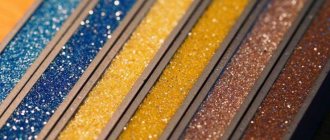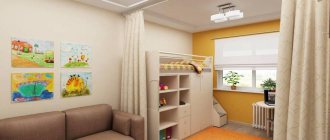Required Tools
The process of applying putty is simple, but it requires the use of special tools. A drill with a mixer attachment is required for mixing. It will come in handy when the master dilutes the dry powder with water. While it is mixed with water, lumps will form in the container. To get rid of them and make a homogeneous mixture, you need a professional nozzle.
The second tool required is one spatula or a whole set. Experts recommend using at least two spatulas during the puttying process. A wide tool of 40-50 cm will be useful for applying the main coating and a small spatula for correcting small irregularities. The smaller the spatula, the more hard-to-reach places you can treat with the building mixture. If you have experience in construction work, you can use a trowel to putty walls - a construction accessory that allows you to smooth the surface.
In order for the paint layer to adhere firmly to the surface, it must be primed after puttying. After priming, the wall will be covered with a thin film. For this you need rollers and brushes.
You need a small spatula like this Source allremont59.ru
In order for the mixture to lie evenly, it is necessary to apply test beacons to the surface before starting work. They are made using a laser or spirit level. But sometimes even after applying the coating, the wall turns out to be uneven. Then a rule will be needed. Preferably a long metal one, because it is convenient for them to level thick layers.
Dried wall putty can be rubbed down if you want to get a spectacular and beautiful coating. To obtain a textured finish, sandpaper or fine sandpaper is needed. 240-grit sandpaper is suitable for grouting the finishing putty. If the farm has a manual skinner, then it is worth using it. The tool is a device that has a handle with special clamps for attaching the skin. It makes the process of processing the wall easier.
Be sure to have special clothing for work. It is necessary to protect your hair with a headscarf and your hands with gloves. To prevent dust or small particles of the dry mixture from entering the respiratory tract, you need to work in a mask.
Performing operations independently
Beginners starting to putty with their own hands can find many recommendations on the Internet, many of which are presented in the video.
Each stage of work consists of two steps:
- checking the evenness of the wall;
- applying a leveling layer.
Using a broad rule, the size of the gaps is checked. These holes will need to be filled with the starting putty mixture, so you need to mark them with a pencil. The rule must be applied in different directions - vertically, horizontally and diagonally.
Note! If most of the protrusions are located horizontally, then the movements during puttying should be horizontal, if vertical, the spatula at the first stage must be moved from bottom to top.
What is the best way to level a wall with putty?
- Using a small spatula, apply the mixture onto a large one and distribute it evenly and forcefully. Professionals often recommend using a tool at least 45 cm wide to quickly and accurately level walls.
Attention! You need to start putting putty from the corner. To create neat corners, it is convenient to use a special corner spatula.
- Movements are carried out in two directions: vertically and horizontally.
- Sometimes experts advise applying one layer strictly from top to bottom, the other from left to right. Moreover, when explaining to beginners how to level walls, experts recommend creating two or three rough layers and the same amount for finishing. Whether it is necessary to strictly adhere to such rules, everyone can determine from their own experience, however, when performing work for the first time, it is better to follow the recommendations.
- Having distributed the putty over the wall, the remaining material is removed from the spatula. After each movement vertically or horizontally, a little solution is added.
- Each new movement is made overlapping with the previously applied solution.
- After processing an area of about 0.5 square meters. m, you need to apply the rule to the surface and pull it from top to bottom to remove excess material.
- You need to wait until the wall leveled with the first layer dries well. This may take up to 2 days.
- Then a clean spatula or block wrapped in sandpaper is passed along the wall, removing the formed tubercles and grouting the surface. This can also be done with a special grater.
- Next, the evenness of the surface is checked again.
- Leveling the walls with a special finishing putty is the final stage. It is carried out when an almost ideal flat surface is achieved according to the principles described earlier.
USEFUL INFORMATION: Kitchen renovation: where to start, main stages
How to choose putty
The most difficult thing at the first stage is deciding what to putty on the walls with. Building materials differ in components:
- gypsum;
- polymer;
- cement.
Varieties of mixtures Source stroyfora.ru
Each variety has its own characteristics, pros and cons. Gypsum mixtures are usually chosen for reasons of economy: the cost of the compositions is lower compared to other types. Gypsum putty does not shrink and is perfectly leveled. There is also a drawback: putty is negatively affected by moisture, so it is better not to use gypsum mixtures in the kitchen, bathroom or other rooms with high humidity levels. Cement putties do not have this disadvantage. They can be used in any room. But you need to be prepared for shrinkage.
Polymer putties are the most preferred material to prepare the surface for further finishing. They are not afraid of humidity, they do not shrink. After applying the putty, the surface is completely ready for further finishing. However, polymer mixtures are much more expensive.
Another method of classifying putties is based on the purpose of the mixture. All compositions are divided into three groups:
- leveling , which are applied at the very beginning of finishing work;
- decorative - the walls are covered with putty at the finish, the coating is final;
- universal , which can be used at any stage of wall redecoration.
Decorative putty Source yandex.net
All starting coatings have similar characteristics. They are characterized by high strength and large grain size. Apply after plastering in a thick layer of 3-20 mm. The finishing coating, on the contrary, is applied to the wall in a thin layer of up to 4 mm. Using the finishing mixture, you can hide minor defects in the wall. However, the main disadvantage of decorative putty is its low strength.
If you need a product that combines the properties of both decorative and finishing mixtures, then it is better to choose a universal putty. They are a little more expensive, but they are durable and have a perfectly smooth coating. It is recommended to use universal putties for those walls where there are no large flaws.
Regardless of the purpose of the composition, the putty can be dry and already diluted. It is better to choose dry if you need to store the composition for a long time. In addition, dry putty allows you to save money: it costs less than ready-made putty. If you purchased a liquid mixture, you will not need a special mixer. The putty already has the required consistency. It produces less dust. Ready-made formulations have their drawbacks:
- high price;
- more shrinkage;
- cannot be stored for a long time, the purchased mixture must be used as soon as possible;
- Suitable only for applying a thin layer of putty.
Preparation of dry mixture Source pol-exp.com
See also: Catalog of companies that specialize in finishing and facade materials and related work
How to properly level walls before puttying with your own hands
Before applying putty, the surface must be prepared:
- Remove old coating, dirt and dust.
- Prime. This process eliminates minor defects and cracks and improves adhesion. The primer is applied with a roller and dries within 10 hours.
The dry mixture is poured into the water, and not vice versa. The finished composition should not be covered with a lid - it will dry out faster and become unusable.
Which is better for leveling concrete walls?
There is a special putty for concrete walls, which has the following advantages:
- Strength.
- Adhesion.
- Resistant to water and fire.
- Non-toxic.
- Resistant to chemical elements.
- Resistant to temperature changes.
- Durable.
Compositions for concrete have components that ensure the safety of the surface.
The work is carried out in several stages:
- The concrete wall is prepared: the previous coating is removed, the cracks are widened and filled with cement mortar.
- Primer in two layers.
- The putty solution must be prepared in accordance with the instructions. The composition is used within four hours after preparation. It is recommended to mix with a construction mixer, but if the mass is more than 25 kg, then with a concrete mixer.
- The first layer is thrown onto the wall and spread with a spatula. For better results, you can use a reinforcing mesh. After drying, apply a second layer.
- Grouting is being done.
Which one to choose for wooden walls
A special putty has been developed for wooden surfaces. Advantages of the composition:
- Moisture resistant.
- Hides defects and cracks.
- It has a structure that emphasizes the texture of wood.
- Can be used for further painting.
A polymer-based composition is suitable for laminate and parquet. It is elastic, gives a smooth transparent coating and hides imperfections. Resistant to water and mechanical damage.
For the exterior, epoxy putty or nitro compound is recommended.
If you need to putty a large area, such as a house or garage, use a gypsum compound.
You can prepare the solution yourself; for this you will need:
- PVA glue, finely ground crushed chalk. Before cooking, the chalk must be sifted. Glue is poured into the container and mixed with chalk with a construction mixer. The finished composition has a consistency similar to thick sour cream. If it turns out too thick, you can add water.
- If you need to eliminate strong defects using homemade putty, then add sawdust and water-soluble varnish instead of PVA. Chalk and varnish are mixed, sawdust is gradually added. Leave the prepared solution for a day so that the sawdust swells.
The putty is applied to the wooden surface in the same order as on the others.
Preparing the wall: removing the old coating
Preparing the room involves removing furniture or protecting things from dust. It is better to cover the floor with newspapers or transparent film.
Before you putty the walls for painting, you need to prepare the surface. It must be clean. These coatings are removed:
- leftover paint;
- scraps of plaster;
- wax;
- formwork;
- old whitewash.
Preparing the wall Source msgo.com
If there are grease stains, you need to remove them. Old wallpaper (especially if it is poorly glued or has swelling) is removed. If you have difficulty removing the wallpaper, you can moisten it with water. When dirt and remnants of old repairs have been removed, you need to apply a primer. This is necessary to ensure good adhesion, that is, a good connection of the putty with the wall surface.
One layer of primer of small thickness is enough. To ensure that the coating is applied evenly, it is necessary to use construction rollers.
Main stages
The methods of applying putty depend on its type - starting, finishing, lighthouse. When working with starting putty, you will need to stretch a construction mesh onto the wall. This will allow you to apply the mixture in a thin layer. The walls must be covered completely, evenly distributing the material over the surface. This will help achieve perfect smoothness. Experienced craftsmen give this advice: ideal evenness can be achieved only with the help of a coarse mesh.
Two spatulas are often used in work Source remontdoma24.ru
Do I need to level the walls before puttying?
A properly prepared surface is the key to quality repairs. Many people have a reasonable question: is it necessary to prime the wall before applying putty? This is necessary in the following cases:
- The primer levels the wall, smoothes out microcracks and defects.
- The composition improves adhesion.
- A primed wall requires less putty.
- The composition adheres better to the treated surface.
- The primer contains useful substances that protect against moisture, mold and fungi.
Putty can be:
- Starting.
- Finish.
- Universal.
Ready-made and dry mixtures are available. The latter must be diluted with water to a thick consistency.
For better quality of work, it is recommended to prime the wall before puttying.
Video description
Useful video about finishing putty:
If you know how to properly putty a wall with a finishing coat, you can achieve perfect smoothness. Special finishing mixtures are used: only they can eliminate scratches and gaps.
Since the wall has already been pre-prepared, the finishing coating will coincide with the main one. Therefore, a thin layer of the mixture is sufficient. However, before finishing, you need to make sure that the previous layers are applied correctly. The finish will not save you from remaining bumps or cracks. It is necessary to provide good lighting to see all small irregularities.
Finishing putty
Now let's see how to apply a finishing coat of putty to the wall. This is the finishing stage, which begins when the starting layer is completely dry. It is performed with a special putty mixture designed to give the walls ideal evenness and seal small cracks and pores.
How is the material applied? There is one important feature - the finishing mixture should be applied in a thin layer. If the starting mixture is applied incorrectly and of poor quality, it will not be possible to eliminate the problems with finishing.
How to properly apply finishing putty to walls? Use side lighting to help identify defective areas in a timely manner.
Treatment of cracks in walls
If the wall surface is not initially ideal, there are cracks, then there are special tricks on how to properly putty the walls for painting. Gypsum mixtures or santegypsum are best suited for this. The latter feels more elastic, but takes longer to harden.
Artificial crack expansion Source archidea.com.ua
First, you need to prepare the wall in the usual way - remove dirt and stains. Algorithm for working with cracks:
- Slightly expand the crack in width and depth.
- Lightly scratch the crack along its entire length with a sharp object to make it easier for the gypsum putty to cling to the wall.
- Treat the crack with a primer.
- Apply putty.
Advice from the experts
The prepared mixture must be processed quickly until it begins to harden in the container. If you are working with a ready-to-apply solution, you have more time - up to a day.
Don’t be afraid to work with two spatulas - it’s convenient and completely justified.
When doing finishing work, use protective clothing, cover the floor surface and pieces of furniture with polyethylene material so as not to get dirty.
It's okay if you apply a lot of putty at the starting stage - it is stretched over the surface of the wall, filling uneven areas.
Each difference exceeding a two-millimeter depth is filled with mortar mixture and leveled with a spatula when performing the second layer.
Procedure for applying putty
The first step in wall putty is preparing the mixture. If you use dry putty, you will need a container of sufficient size to mix the composition. A small amount of water is poured there and powder is added. First, you can mix the mixture with a regular spatula. But to get rid of lumps, you still need a drill with an attachment. It is necessary to knead the putty until it has a homogeneous consistency. The main sign of the mixture’s readiness is elasticity and thickness. Properly prepared putty sticks to the nozzle and spatula.
Mixture application techniques
Despite the fact that the method of applying the mixture was indicated above, the home craftsman should know what types of finishing work exist. There are three main techniques for plastering walls. The first is the classic one, during which the putty is applied to the wall manually. Its main advantage is the ease of processing wall joints and hard-to-reach places. The master feels the small irregularities better and eliminates them with the help of additional layers of putty. The main disadvantage of the method is that processing walls takes a lot of time and physical effort.
Manual application and leveling Source obzorkuhni.ru
Wall treatment for painting and wallpaper
Puttying walls for painting has its own nuances. The final coating of paint does not hide a single flaw. Therefore, for high-quality painting it is necessary to carefully level the walls. The following operating procedure is recommended:
- Apply the first layer of leveling putty.
- Leave the putty until completely dry. It’s better to spend at least 12 hours on this.
- If there are noticeable unevenness, you can apply a couple more layers.
- Leave each layer to dry.
- Apply a layer of finishing putty to remove cracks, irregularities, and other minor defects.
- A smooth surface is achieved by finishing the wall with sandpaper.
The amount of mixture used and the number of layers applied depend on the density of the wallpaper. If you plan to glue thin wallpaper, it is enough to apply the preparatory mixture in three layers. If the wallpaper is thick, then you can reduce the number of layers to two. This way you can paste the wallpaper without blistering.
Why do you need putty and what is it?
Puttying is usually understood as the process of treating wall surfaces with finishing materials immediately before wallpapering or painting. If the construction mixture is applied incorrectly, as a result, unrepaired defects will appear under any decorative coating - cracks, unevenness and pits.
Repair of wall defects before puttying
After eliminating the existing defects, a smooth and at the same time even surface of the wall or ceiling is achieved using putty. For these purposes, materials are used for starting and finishing, which are dry mixtures of coarse and fine grinding.
Dry mixture for interior finishing work
Starter plaster allows you to eliminate wall defects, as well as level them and create a basis for finishing. It is performed with a gypsum solution, which makes it possible to make any surface flawless. In addition, in some cases, a universal putty is used, which eliminates wall defects and is used as a finishing plaster, and the solution is applied in several layers. There are a huge number of ready-to-use finishing mixtures on the market that are ready to use. Their cost is much higher than their dry counterparts, for this reason such materials are not widely used.
Ready-to-use putty
